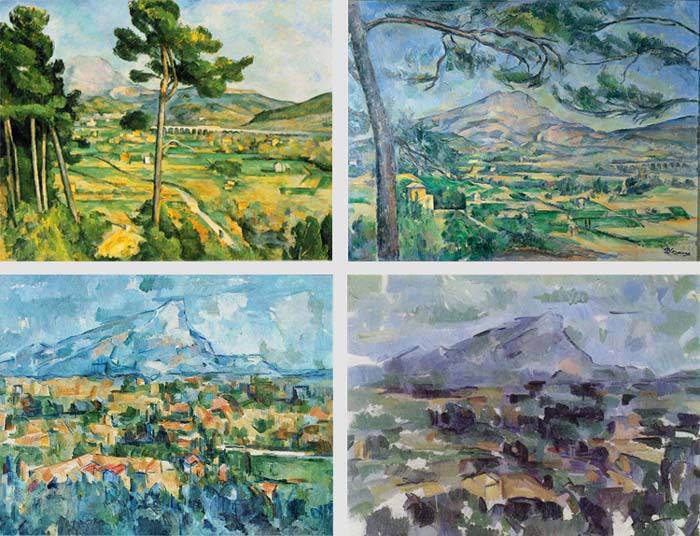Paul Cézanne · Montagne Sainte-Victoire (series of paintings)
Four paintings from the series (1882-85, 1885-87, 1904 and 1904-06)

Paul Cézanne (France, 1839-1906). Between 1882 and 1906. Oil on canvas. Various museums and collections.
“Cézanne was my one and only master (…) He was like the father of us all”
Pablo Picasso
The many views of the Montagne Sainte-Victoire that Paul Cézanne painted between 1882 and 1906 rank among the greatest landscapes ever painted, and they had a great importance in the development of modern art
Cézanne moved to Provence in the early 1880’s and, disillusioned with Impressionism, he decided to follow his own path, finding inspiration in the landscape. His soon became interested in the representation of Mount Sainte-Victoire, a 1011 meter (3,317 ft) tall mountain near Aix-en-Provence.
Like Hokusai in his “Thirty-six Views of Mount Fuji”, Cézanne used different points of view in his “Montagne Sainte-Victoire” paintings, allowing the representation of the environs of the mountain. This diversity is key to understanding the evolution of Cezanne’s late style. In the first views of the mountain, of which the most famous example is exhibited at the Metropolitan Museum of New York (1882-1885), Cézanne gives importance to the drawing, highlighting the presence of the trees in the foreground. In the later works, like the ones belonging to the Philadelphia Museum of Art and the Kunsthaus Zurich, line has virtually disappeared and there are only colour planes representing different volumes.
“Treat nature by means of the cylinder, the sphere, the cone, everything brought into proper perspective”, Cézanne wrote in 1904. The art of Cézanne, “cubist before the cubism”, set the basis of the 20th century avant-garde.
G. Fernández – theartwolf.com
Follow us on:
